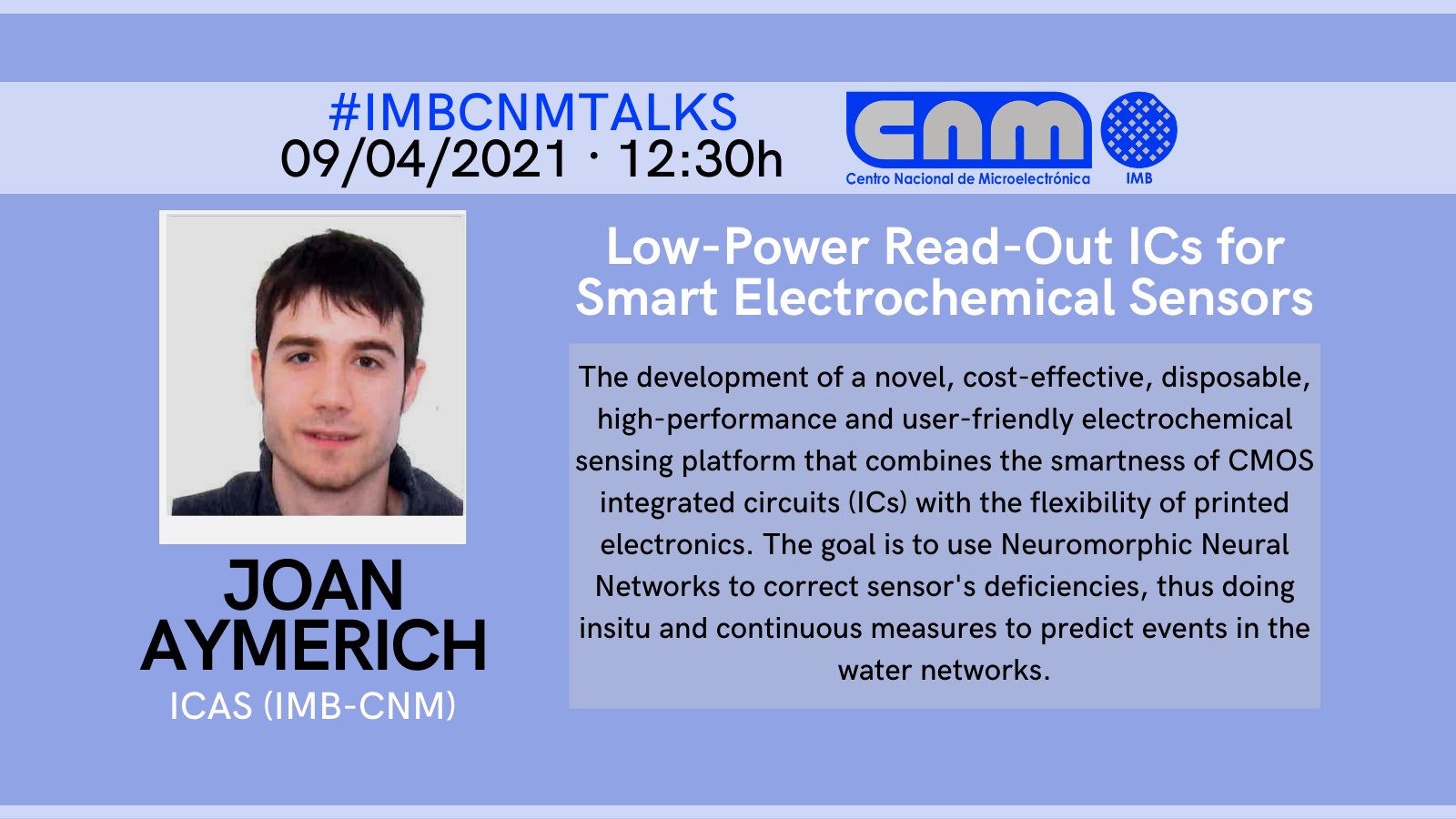#IMBCNMTalks: Low-Power Read-Out ICs for Smart Electrochemical Sensors
A presentation by Joan Aymerich (ICAS group) about his thesis, which he has just recently defended.
Introduced by the thesis director, Francesc Serra.

Abstract:
Electrochemical sensors are expanding rapidly over other chemical sensoring technologies because of their potential to generate precise, selective, miniaturized and cost-effective analytical devices. These features satisfy the emerging global demand for disposable testing systems at the point-of-need, where usability, portability, and price counts most, enabling to detect critical analytical evidence by anyone, anywhere and at any time, without concerning about recalibration and limited shelf life. In particular a disposable electrochemical device must include a paired smart electronic interface to specifically bias the electrochemical cell, acquire signals, perform data conversion and communicate measurements through a standard digital interface, all under severe restrictions of size and power consumption.
This thesis describes the development of a novel, cost-effective, disposable, highperformance and user-friendly electrochemical sensing platform that combines the smartness of CMOS integrated circuits (ICs) with the flexibility of printed electronics.
Two practical μW-range readout integrated circuit (ROIC) realizations in 65-nm and 0.18-μm CMOS technologies are presented and specifically optimized for the potentiostatic biasing and amperometric read-out of electrochemical sensors. The proposed frontend architectures yield very elegant and compact CMOS implementations by reusing the dynamic properties of the sensor itself to implement continuous-time mixed electrochemical delta-sigma modulators (∆ΣM). The topologies include differential potentiostats to extend its range. Furthermore, low limit of detection (LOD) values can be achieved by implementing a novel cancellation mechanism of the flicker noise coming from the feedback DAC of the electrochemical ∆ΣM. A standard interface based on I 2 C is included on-chip not only to control the extensive system configuration but also to limit the number of IC pads towards a low-cost flip-chip assembly on flexible substrates. Experimental results from both electrical and electrochemical tests are presented and compared to other state-of-the-art electrochemical sensor frontends.
A cost-effective hybrid electronics interfacing approach is proposed, where the electrochemical sensor is directly printed on a flexible PEN substrate that also hosts the CMOS ROIC as a bare die without wire bonding. Low-cost inkjet printing technology is employed for the development of a three-electrode sensor and all the required connectivity. Anisotropic conductive adhesives are investigated as an emerging approach for mechanical and electrical contact between the IC die and printed inks in order to obtain a disposable flexible smart electrochemical sensory device.




